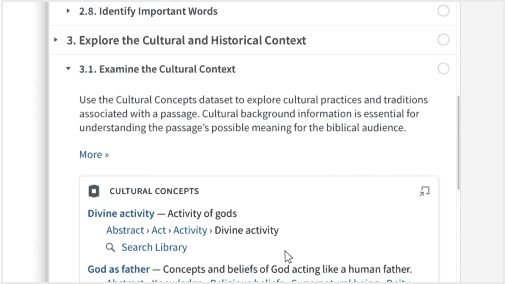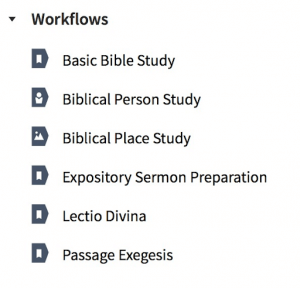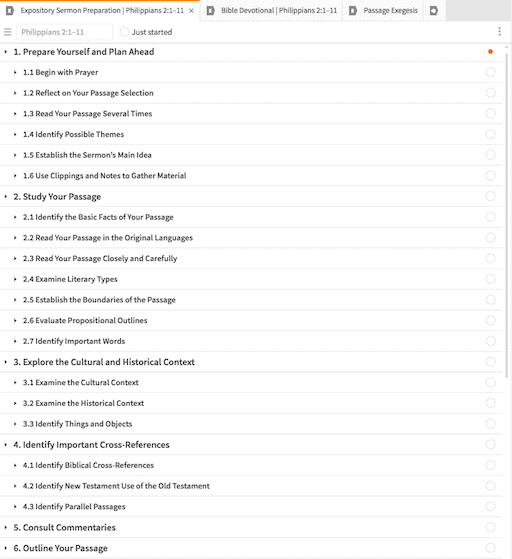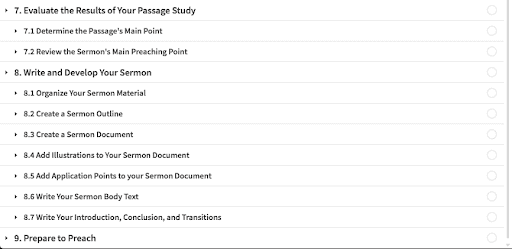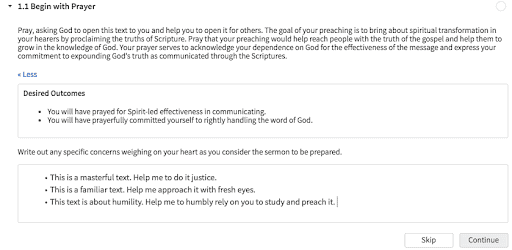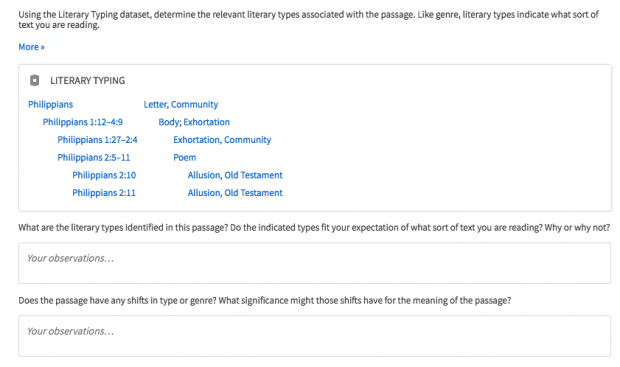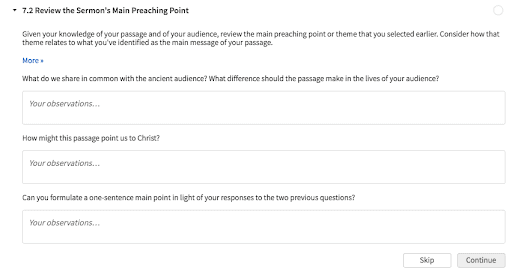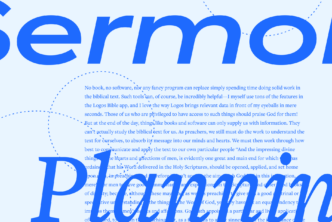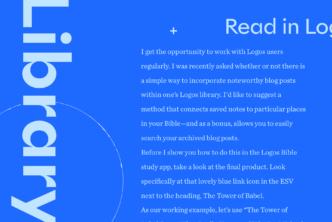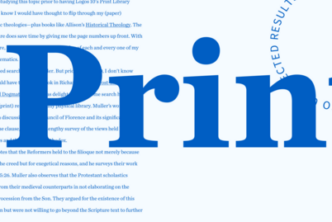If you’re writing expository sermons, it means you’ve developed skills for serious Bible study.
And not only that, you’ve developed skills for sharing the wealth you discover with others.
As you know, that process takes a lot of time, demands many steps, and requires a number of resources. How can you tighten it up without skipping the steps you know you need to take for an accurate, thorough, transformative sermon?
One way is the Expository Sermon Preparation workflow in Logos 8.
In this post, I show you how the Sermon Preparation Workflow is particularly helpful for anyone writing sermons week to week. You’ll see how the workflow:
- Surfaces Logos resources from your library you may have forgotten about
- Introduces you to many Logos tools that you may be underusing
- Keeps you from cutting corners or stopping your study short.
In other words, it helps you better use what you’ve invested in Logos for better, richer sermons.
How it works
For this post, I’ll be showing you highlights from an Expository Sermon Preparation workflow on Philippians 2:1–11.
First I select from a list of pre-made workflows. There are 11, though just six are shown below. You can also create custom workflows, so your options are nearly endless.
When I select Expository Sermon Preparation and enter my text (Phil 2:1–11), in seconds Logos lays out a nine-step process—each with several substeps—for an organized action plan.
Not everyone is detail-oriented, and with Workflows, no one has to be—workflows are organized for you. You simply work through the steps, and by the end, you know you’ve thoroughly studied your passage and prepared your sermon.
Now let’s take a peek inside some of these steps to see how Workflows is more than just a study template. It’s truly a guide.
Going deeper
As I dug into the Expository Sermon Preparation workflow, I realized right away that the people who designed it know the process.
And not only that, all the resources you need for each step are provided in the moment. So even if you’re in a time crunch, it’s easy to do thorough, responsible, in-depth exposition every time.
Let me show you with just three examples.
1. It begins with prayer
The first substep in “1. Prepare Yourself and Plan Ahead,” is to begin with prayer.
In the screenshot below, you see that it introduces why this step is important, and if I click “More >>” (which I did), it reveals opportunities to consider specific outcomes and take notes on this step in the process (which I also did).
How many of us have sat down to hammer out a sermon and skipped the most important part of the sermon prep process?
The workflow begins by bringing my entire process under the banner of prayer, as it should be. Already I’m off on the right foot.
2. It gets into the nitty gritty
Now let’s skip down to the meat of the process: studying the passage itself.
At a glance, I see that the substeps in #2 involve crucial elements of exegesis, like original languages, important words, and literary types—a good sign.
It’s the Literary Types substep that really caught my attention. Those who have been studying the Bible for a long time know that literary type and genre are critical for interpretation, though often overlooked.
If you take a close look at the observation questions, you’ll notice the second one asks if any shifts in type or genre occur. In fact, one does. It is commonly understood that Paul’s words in Philippians 2:5–11 are from an early Church hymn, which the Literary Typing table notes.
Truthfully, I wouldn’t have thought to ask what a shift in type or genre may indicate about the meaning of the passage. Logos did, and my sermon is better for it.
3. It reminds me to review
Just before Step 8, “Write and Develop Your Sermon,” is this crucial step: 7.2 Review the Sermon’s Main Preaching Point.
Anyone who’s ever written a sermon has realized halfway into drafting a manuscript that the main point isn’t quite right, and that they’re now unwittingly writing two different sermons.
This step reminds preachers to reconsider the main point in light of all they’ve learned since developing the provisional main point (Step 1.5) before writing the sermon:
Notice especially the first clause, “Given your knowledge of your passage and of your audience . . .” (emphasis mine).
Now the workflow is turning the preacher’s attention toward the sermon audience, which wasn’t part of step 1.5. The first two prompts provide ways of getting at that perfect main preaching point, one that is sensitive to the original audience, the current audience, and the work of Christ.
Next time I sit down to prepare a sermon, I will not hesitate to launch this workflow. It’s incredibly detailed and intuitive, it gives me a clear process to stay on track, and it recommends resources along the way for me, saving me time deciding where to look myself.
For the busy pastor or Bible teacher, this workflow gives you one less thing to keep track of, and one more way of staying on track.
This workflow is available in Logos 8 Silver and above.
Here are links that will help you take the next step toward using the Workflows feature:
- If you already own Logos 8, check out the Workflow training video.
- If you want to upgrade to Logos 8, learn about your upgrade options.
- If you have never purchased a Logos base package, get your first one now.
***
Don’t miss out on Logos 8. There are discounts to be had for first-time purchasers and upgraders alike, so check out everything that’s new in Logos 8, and sign in to see your custom price.

